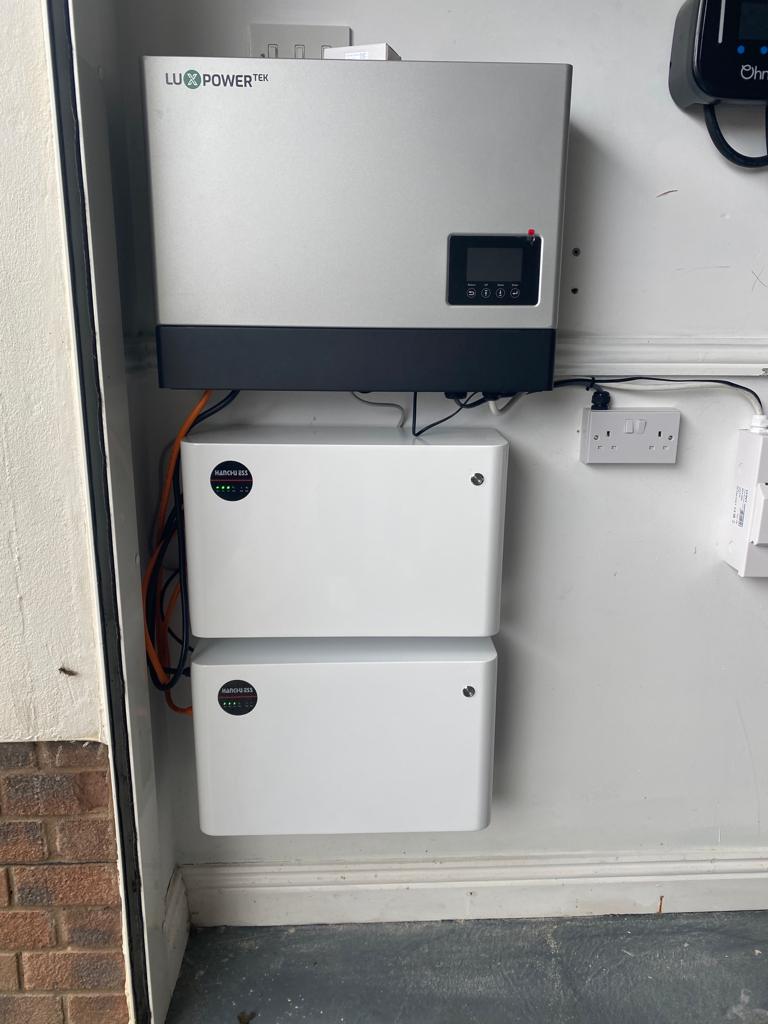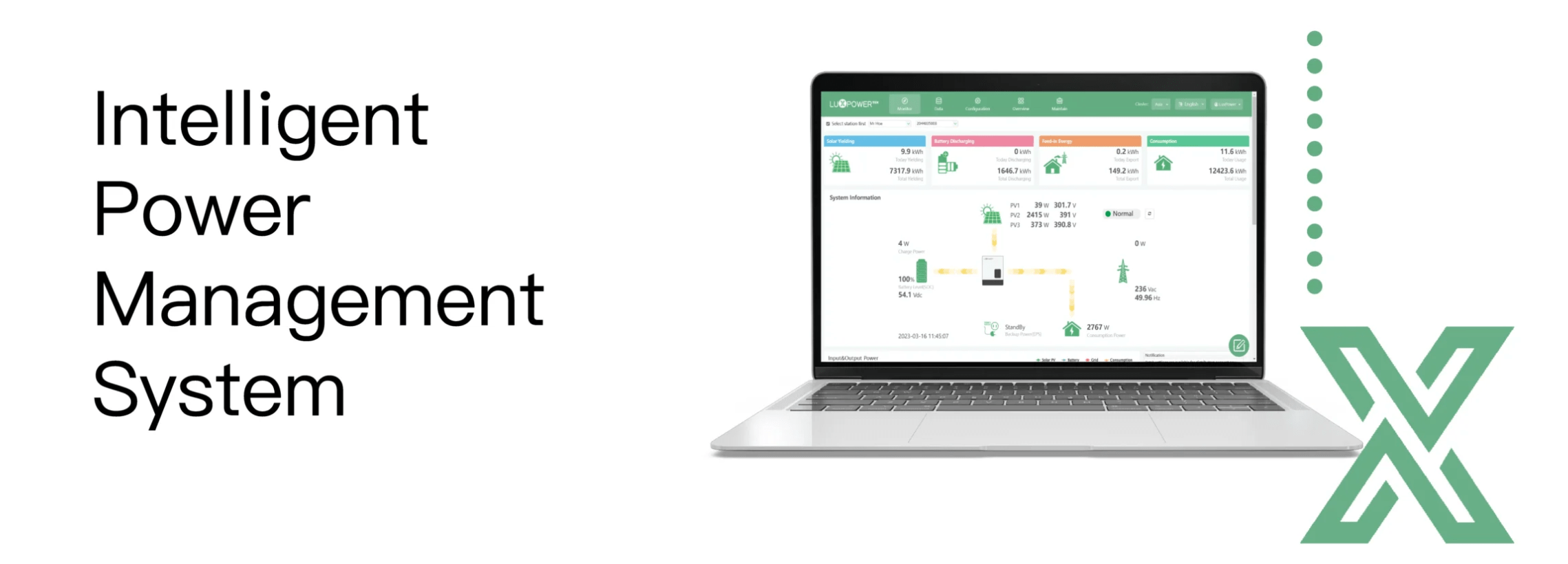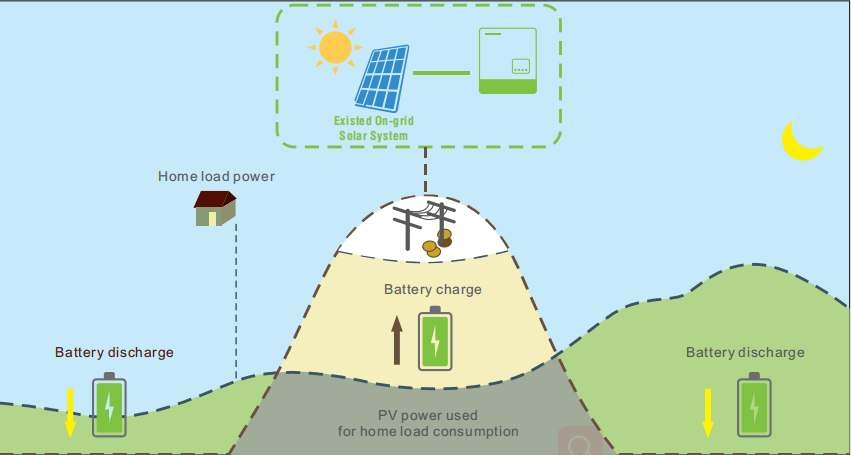Lux Power LXP 3600 AC Controller


The Lux Power AC units are remarkably straightforward battery energy storage systems. They are designed to seamlessly retrofit alongside existing solar power systems, as they do not interfere with the current solar energy setup in any manner. Consequently, there is no impact on existing incentives, such as the FIT payments.
These Luxpower AC units are G98 certified and can accommodate a connection of 1 to 8 batteries, boasting a max charge capacity of 70A DC, which translates to approximately 3500W of electricity. To achieve this maximum rate, sufficient batteries must be integrated into the storage systems.
Furthermore, while the Lux AC units are ideally compatible with existing solar power systems, they have been designed to function independently of solar energy. This feature significantly broadens their application, catering to a burgeoning market for domestic battery energy storage systems in scenarios where solar PV installations may not be suitable. This is a game-changer for renewable energy sources, as evidenced by our diverse customer base, which includes residents living in multi-story apartment blocks.
These battery energy storage systems not only serve as a reliable backup power solution during a power outage but also play a pivotal role in managing energy consumption. By storing solar energy when production exceeds electricity demand, these systems can later dispense this clean energy when needed, thereby effectively reducing energy costs and electricity bills.
In addition, the Lux AC units contribute to a global transition towards renewable and clean energy sources. By optimizing energy usage from solar power and minimizing reliance on grid electricity, these storage systems substantially reduce carbon emissions and the overall carbon footprint of households, ultimately making a positive impact on energy production and our environment.
The entire Luxpower collection features sophisticated automatic charging and discharging programming, enabling customers to take advantage of charging during low-cost electricity periods. Specialized programs have been designed to facilitate effortless charging with Octopus Agile and various other Octopus Energy plans.
The AC units are available in two distinct versions. The standard ACS model allows for maximum charge and discharge rates of up to 3500W (16 amps), representing a leading-edge power capacity for battery interactions in the market. Recognizing the desire for future system expansion among customers, Luxpower introduced an innovative variant of the standard AC unit. This updated model, dubbed the Squirrel Pod (reflecting its storage-focused nature like a squirrel), was developed to offer customers the option to extend their system as needed in the future.
The Lux Power Squirrel Pod represents an advanced evolution of standard Lux Power AC units. This advanced design incorporates additional hardware, allowing for the potential to link a second, third, or up to ten Squirrel Pod controllers together, either now or in the future. Each Squirrel Pod requires its own set of batteries and can be connected either individually or through a shared connection to the customer’s fuse board.
These units operate in parallel, meaning that only the Primary controller is equipped with CT clamps. The remaining units are configured in a Subordinate working mode, wherein they follow the directives of the Primary unit, which controls all operations and instructs the other units when to charge or discharge their batteries.
Both the standard AC units and the Squirrel Pod units are registered on the ENA Register and hold G100 certification.
To find out more about our Lux Power Squirrel Pod systems please CLICK HERE.
Product Information:
- Battery Types Li-Ion or Lead-acid
- Nominal Battery Voltage (V) 48
- Max. Charging Voltage (V) SSO (Configurable)
- Max. Charging Current (A) 70
- Max. Discharging Current (A) 70
- Battery Capacity (kWh) >3
- Charging Mode for Li-Ion Battery Self-adaption to BMS
- Charging Mode for Lead-acid Battery 3-stage
- Max.Apparent Power Output to Utility Grid (VA) 3600
- Max.Apparent Power from Utility Grid (VA) 6000
- Nominal Output Voltage (V) 230
- Nominal Ouput Frequency (Hz) 50/60
- Max.AC Current Output to Utility Grid (A} 16
- Max.AC Current From Utilily Grid(A} 26
- Output Power Factor -1 (Adjustable from 0.8 leading to 0.8 lagging)
- Output THDI <3%
- Grid Connection Single phase
- Inrush Current 10A/10us
- Max. Output Fault Current 50A/20us
- Max. Output Apparent Power (VA) 3600
- Peak Output Apparent Power (VA) 4700,30sec
- Automatic Switch Time <0.01s
- Nominal Output Voltage (V) 230 (±2%)
- Nominal Output Frequency (Hz} 50/60 (±0.2%)
- Max. Output Current (A) 16
- Back-up Over Current Protection(A} 40
- Output THDV (linear load} <3%
- Anti-islanding Protection lntegrated (AFD)
- Output Over Current Protection Integrated
- Output Short Protection Integrated
- Output Over Voltage Protection Integrated
- Operation Temperature Range (‘C) -25-60
- Storage Temperature (“C) -40-65
- Relative Humidity 0-95%
- Operation Altitude (m) 4000
- Cooling Natural Convection
- Noise (dB) <25
- User Interface LCD &APP
- Interface With BMS RS 485 /CAN
- Communication With Cloud Wi-Fi
- Weight (kg) 15.6
- Size (Width•Height•Depth mm) 550•320·110
- Mounting Wall Bracket
- Protection Degree IP 65
- Environment Category Outdoor & indoor
- Standby Self Consumption (W) <10
- Topology High Frequency Isolation
- Safety Regulation & EMC G83,
- CE, EN61000-6-1/3,
- EN62109-6-1/2, AS4777,
- IEC62040-1

The Lux AC battery energy storage system comes with a 10-year warranty as standard, which can be extended to a 20-year warranty for added peace of mind. It allows for the integration of 1 to 8 Lithium batteries, offering flexibility to meet varying energy needs.
With remote upgrading capabilities, firmware and parameter adjustments can be conducted remotely, ensuring the system is always operating at its best. Free monitoring for both mobile and web portal (PC) is included, enabling users to track their energy consumption conveniently. The system features advanced weather compensation programming and is Octopus Agile Tariff Ready, Octopus Outgoing Tariff Ready, and Octopus Go Tariff Ready, allowing for optimal savings on electricity bills.
Additionally, it is Grid Share Incentive ready, promoting energy-sharing benefits. In case of a grid outage, the seamless automatic switch over occurs in just 0.01 seconds, while the integrated EPS comes as a standard feature with a maximum 13A limit. Smart export control is available on both AC and EPS output, making energy management smarter and more efficient.
The unit boasts a max charge and discharge rate of 70 amps and is surprisingly lightweight at only 25kg. Despite its powerful capabilities, it maintains quiet operating noise levels of less than 25dB. The system is designed with durability in mind, as evidenced by its IP65 rating, ensuring it is resistant to various environmental conditions. Moreover, UK technical support is readily available, providing users with prompt and reliable assistance when needed.
Lux AC Key Features
Up To 20 Years Warranty
All our Lux Power Controllers come with 10 Years manufacturers warranty, However at a small extra charge you can upgrade your warranty to 20 years giving you a piece of mind when it come to your investment
70Amps Charge & Discharge Rates
Most controllers on the market only allow you a maximum of 60 amps charge & Discharge rate. You will also need to use a minimum of 3 Lithium batteries to achieve the maximum charge and discharge rate of 3Kw. Our Lux Power LXP 3600 AC Controller allows you to us 70 amps and with just 2 of our Aobo Uhome 2400 lithium batteries we can achieve up to 3.5Kw and a maximum of 3.6Kw with 3 or more batteries.
Advanced Monitoring
Our Lux Power LXP 3600 AC comes we Free Advanced Monitoring that gives you a full insight to your system showing more information then you can handle. This information can be viewed via a web portal or Mobile App
Advanced EPS
The Lux Power LXP 3600 AC Controller has an impressive enhanced EPS feature will switch over in 0.01s in the event of a power cut, meaning these systems can also be used with Grid Share incentive programmes
Grid Charge & Agile Compatible
New Energy providers will now provide extremely cheap off peak renewable electricity. The Lux Power LXP 3600 AC can be programmed to take advantage of these cheap off peak tariffs to charge the batteries to use the energy when the tariffs are high.
Power When You Need It
Our Lux Power LXP 3600 AC has three time settings to allow you to choose when you want your batteries to discharge. All other systems on the market only allow their systems to charge & discharge to set default parameters which is no good if all your battery power is gone before you get back home from work!
Which Lithium batteries can I use with my Lux Power AC controller?
Hanchu 9.4kWh Systems
Hanchu 9.4kWh Systems
Lux Power AC With
Hanchu 9.4kWh Blade Lithium
Battery Systems
Hanchu 3.2kWh Systems
Hanchu 3.2kWh Systems
Lux Power AC With
Hanchu 3.2kWh HPD Lithium
Battery Systems
Uhome 2400 Systems
Uhome 2400 Systems
Lux Power AC With
Uhome 2.4kWh LFP Lithium
Battery Systems
Lux Power Monitoring

The Lux monitoring can be accessed through a downloadable app on your phone or via a web portal. The app is excellent, providing you with an overview of your system’s status while you are on the move. For more detailed information and data analysis, however, the web portal is the optimal tool. To view a live demo of the Lux Power Web Portal, click here: Lux Power Web Portal.
To learn more about the Lux Power online & App Monitoring CLICK HERE
AC Coupled Inverter Application

AC Coupling Variable Working Modes

Retrofitting an existing on-grid solar system to a solar energy storage hybrid system is made simple by installing an LXP AC series inverter, which is coupled on the AC side with a battery pack.
In the Self-Use mode, the AC-coupled inverter monitors the power generated by the on-grid inverter. This power is prioritized for use by local loads. Any remaining power is directed to be stored in the battery through the AC-coupled inverter. If there is still excess power beyond that, it is fed back into the electrical grid. This mode is set as the default, as it promotes higher self-consumption of generated electricity and substantially reduces energy bills.

